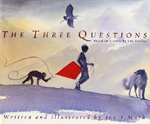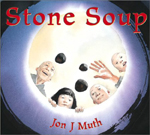Jon J. Muth
Interviewed by Andrew Duncan
|
An award-winning illustrator of graphic novels and children's books, some of Jon J. Muth's many works include Mystery Play, Come On, Rain!, Gershon's Monster, and Putnam and Pennyroyal. His fine art is the subject of two collections: Koan and Vanitas: Paintings, Drawings, and Ideas.
|
What influences you as an artist?
I'm mostly influenced by artists working elsewhere, in other mediums. The sculpture of Isamu Noguchi is a big influence; Brancusi's sculpture; Steve Reich's music: I'm fascinated by their choices rather than their style.
How would you describe your illustration style?
There's a story of a sword master who used "no-sword" sword form. He would adapt to each situation, often not needing to use a sword to prevail. That's the way I think of my work; "no-style" illustration style. It's all intuitive. I just move the paint around, or whatever I'm working with, until it starts to reveal the story in the way I see it.
Why comic books/graphic novels and why children's books?
I'm very interested in what words and pictures can do together that they can't do separately. There is a third thing which occurs. I'm drawn to what is suggested by both the images and the text but remains un-mentioned by either. It can be intellectual, or a logical story point, or emotional. This space seems to be as flexible as either words or pictures. It's a dance between the two. Exploring that element is why I started in comics. Comics has been a natural forum for the way a young adult feels about the world -- angst and confusion and angst and questioning and angst. (Did I mention angst?) So it was a perfect place for me to examine how I was feeling as a young man.
A sense of joy is what moved me from comics to picture books. My work in children's books grew out of a desire to explore what I was feeling as a new father. Children take things very seriously. Their job is trying to figure out how to be in the world, how it all works. At the same time they prize nonsense, as I do, so we're a good match.
Working in children's books has been the most fulfilling. When editors or writers making books for children show me a story it's like they are asking, "have you ever been here or felt this?" It's a sacred invitation. I take it way too seriously.
When did you first read Tolstoy's "The Three Questions"? What was it about the story that led you to adapt it into a children's book?
Retelling "The Three Questions" has been such a gift to me. I first read it about ten years ago, but felt like I had always known the story. I really wanted to give my son the answers (or the tools) that were in it. He was tiny and I didn't want him to have to wait until he was old enough to understand everything in Tolstoy's story. It took some time to get it into the right shape. Then, while working on it, I realized I was also really telling it to myself. The book grew layers and the audience became people of his age and my age and all ages.
How did you decide on the animals -- the heron, the monkey, the dog, the turtle, the pandas -- that are used in the story? And the kite?
In Tolstoy's "Three Questions" the main character is a Czar, and his advisors are military people and priests and scientists and wizards. I wanted Nikolai's friends to be animals that would parallel those characters but not too closely. The animals needed to have specific traits that kids would recognize.
The kite is a little different. It may mean several things. I wanted to give Nikolai's questions a physical presence so maybe that's it. But I am happy enough to not know and let it remain mysterious.
How did your interest in Zen Buddhism influence The Three Questions?
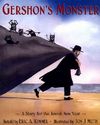 In the pictures I was probably influenced by Zen's "nothing extra": showing what is essential, without decoration. Depicting nature as large and man as small is a feature of Asian painting and I realized later I had done that. I did these things unconsciously.
In the pictures I was probably influenced by Zen's "nothing extra": showing what is essential, without decoration. Depicting nature as large and man as small is a feature of Asian painting and I realized later I had done that. I did these things unconsciously.
Zen is a Buddhist way of sitting still and being present in the moment; a way of waking up to the fact that you are alive and connected to everything right now. The answers to the questions are all about that.
Your new book is Stone Soup, an adaptation of a European folktale set in China. What is it that attracts you to adapting fables and folktales?
Folktales have universal qualities and that's what most interests me. The physical details that place it in a specific culture are what draw you into the story, but I like finding that sense of connectedness that gives it to everybody. Balancing those two points is most important. Sometimes the details can say, in effect, "it's not about us, it's about them". Then the connection may be diminished and it gets put on a shelf for "Those People." Adapting old fables can bring the truths back up to the surface.
 In Stone Soup you change your style somewhat by using a brighter color palatte. Why? And why the darker colors in The Three Questions?
In Stone Soup you change your style somewhat by using a brighter color palatte. Why? And why the darker colors in The Three Questions?
These are all intuitive choices. I work in a state where I don't think of the colors as brighter or darker, they were just the "right" colors.
Any new books planned?
I've illustrated Douglas Wood's beautiful story, Old Turtle: The Broken Truth, and Sonia Manzano -- who plays Maria on "Sesame Street" -- wrote a wonderful picture book titled No Dogs Allowed that is very touching and really hilarious. And right now I am writing something, but I will keep that a temporary secret!
What are some of your favorite children's picture books?
I love Jane Yolen and Ed Young's The Emperor and the Kite and Peter Sis' work is always extraordinary. The Mysteries of Harris Burdick by Chris Van Allsburg is a favorite. Kate DiCamillo's Tiger Rising was magnificent and my daughter and I love to read the Junie B. Jones books.
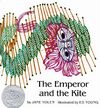


Do you have a favorite bookstore?
The visits I've made to different independent bookstores have been really fun. Each store has its own distinct personality. I can't say I have a favorite. That would be too hard. I have many favorites.
